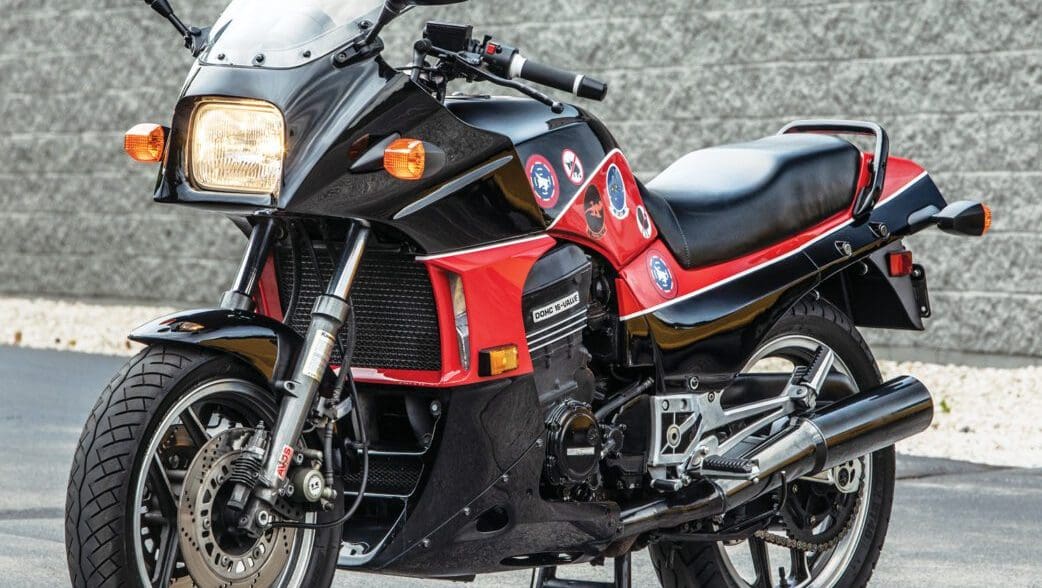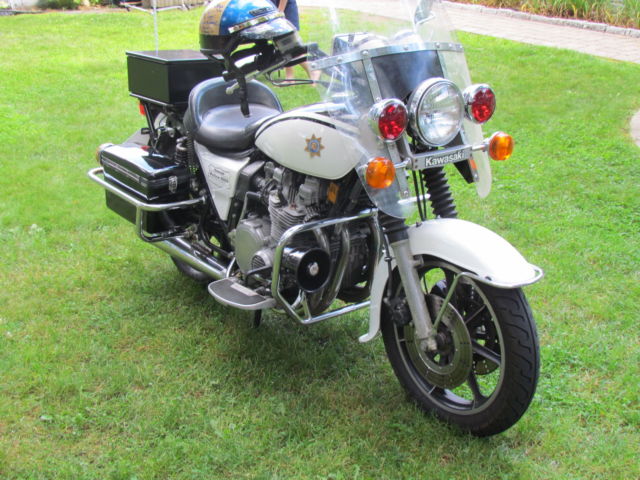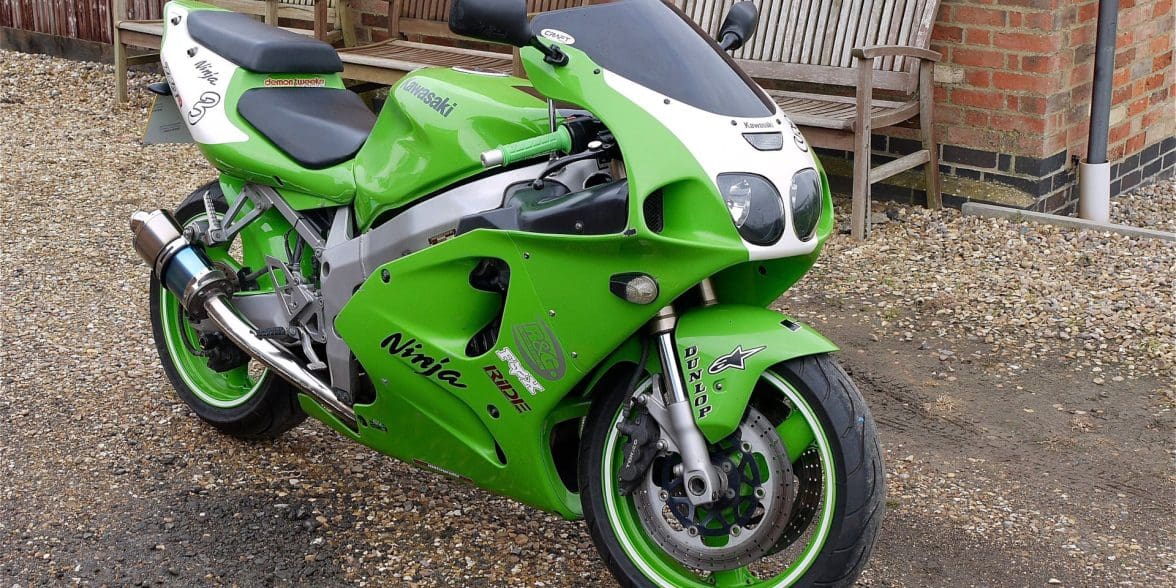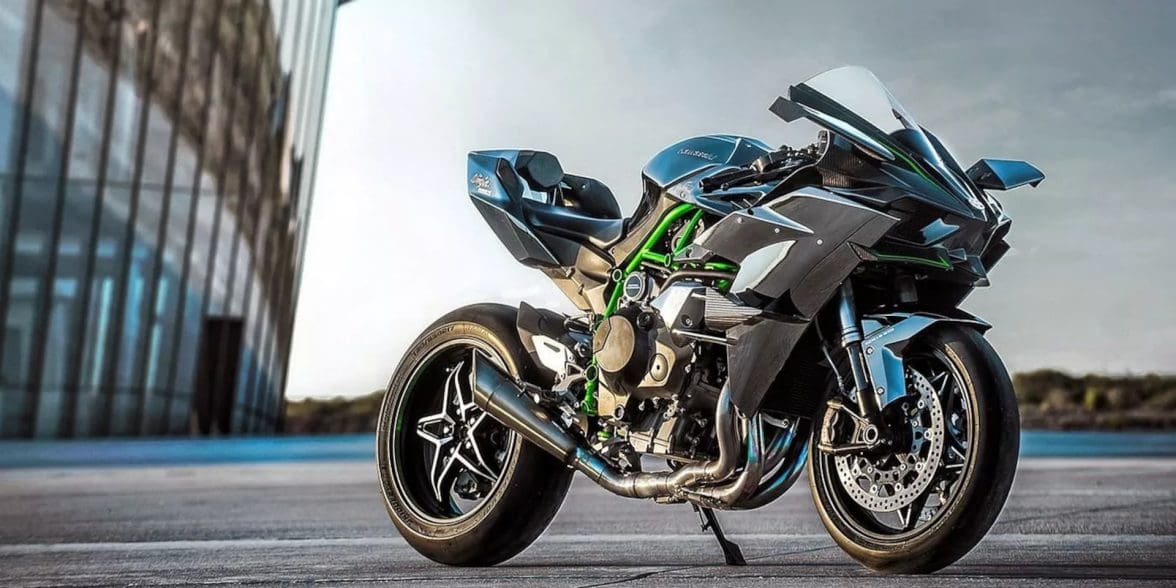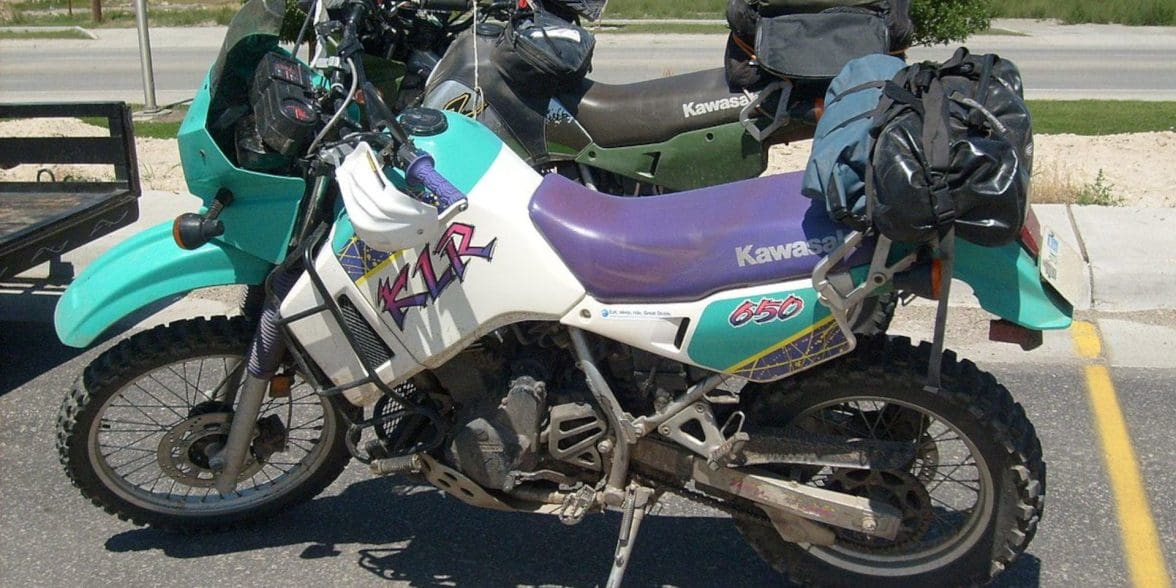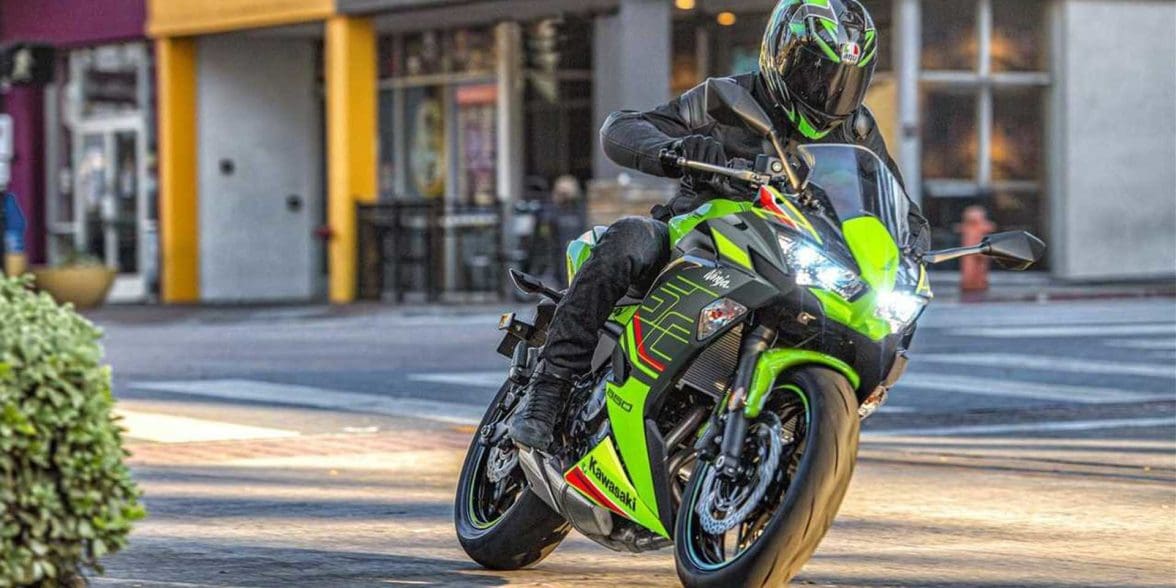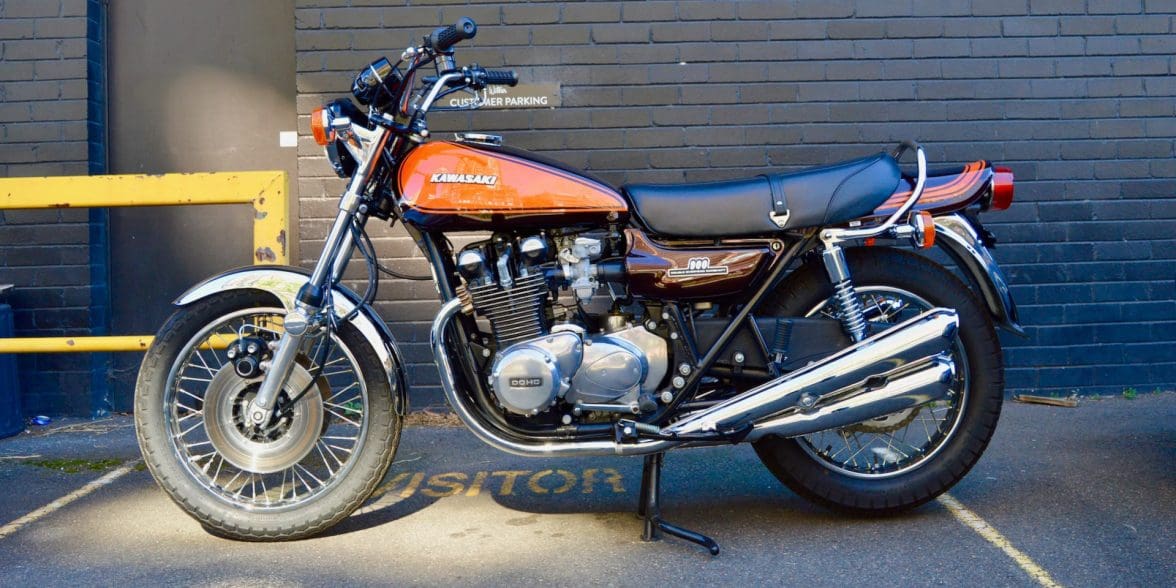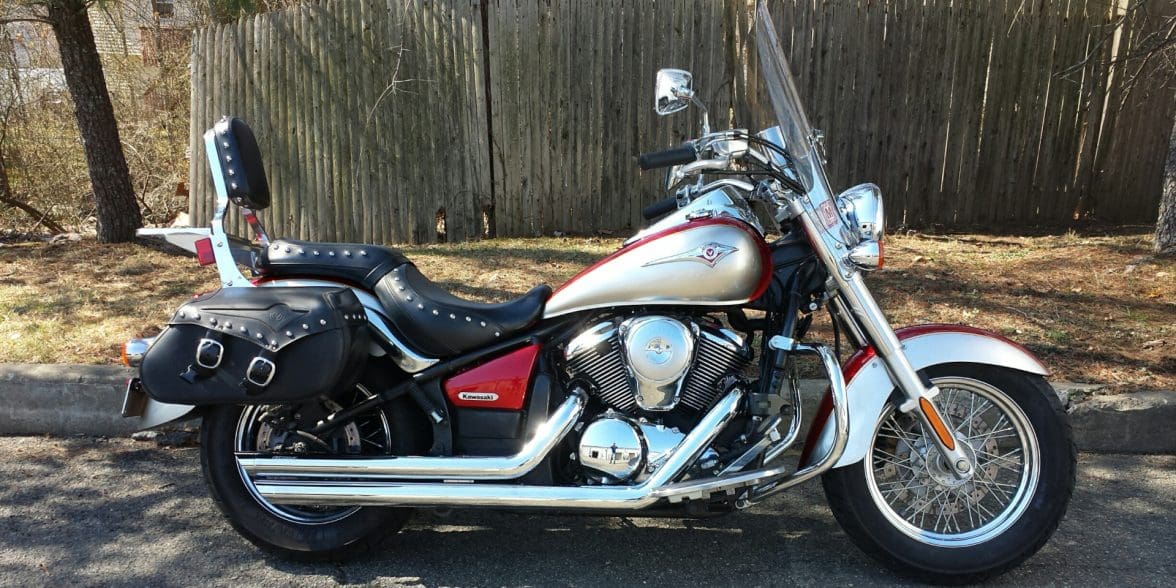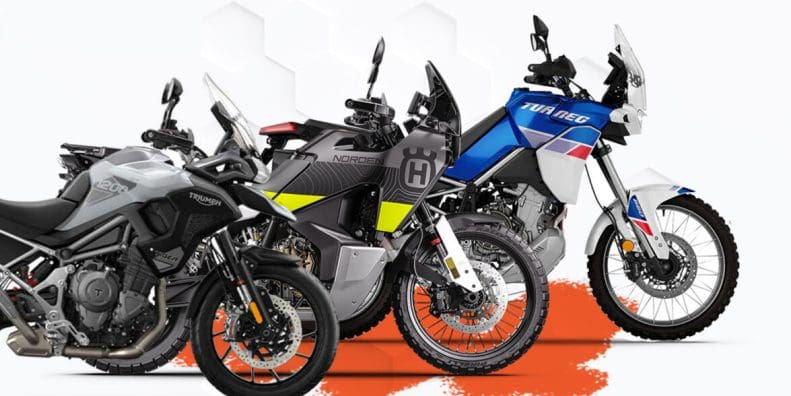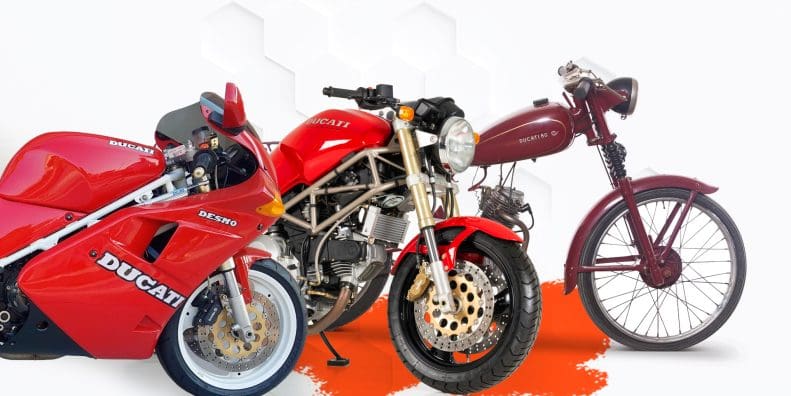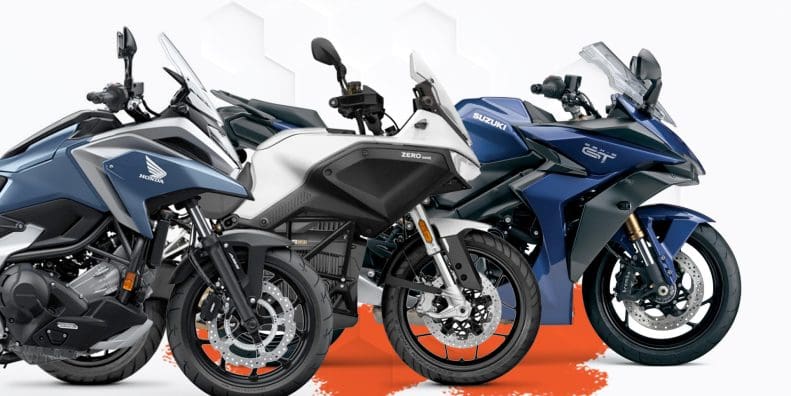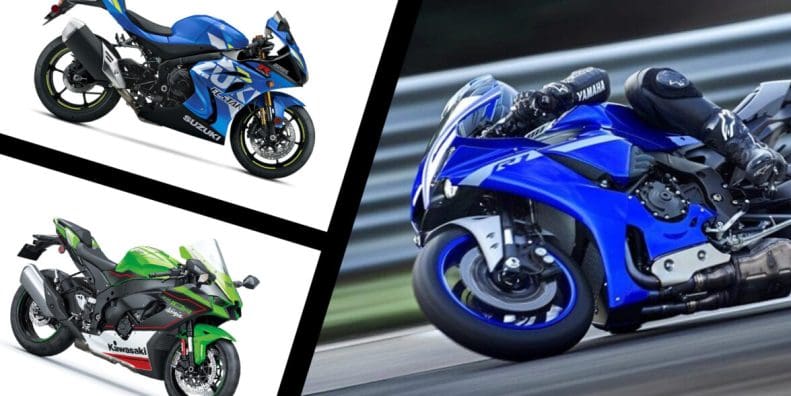The Best Kawasaki Motorcycles Ever Made [2024 Edition]
Updated November 20, 2023 by Simon Bertram
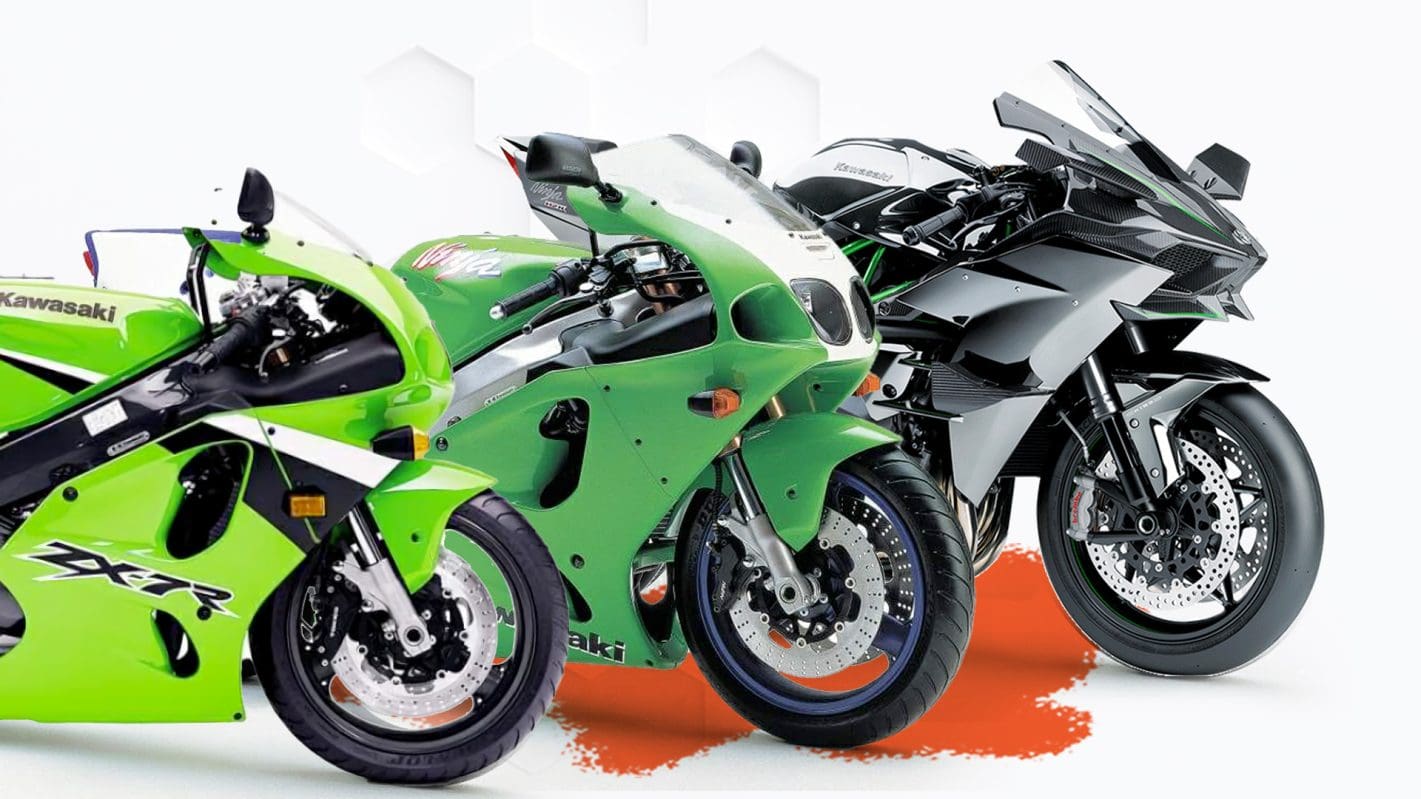
Kawasaki
Article Quick Nav
These are some of the best Kawasaki motorcycles ever made:
In the world of motorcycle evolution, Kawasaki has etched its name as a symbol of innovation, speed, and engineering prowess. Starting in 1962, with engineers meticulously crafting a four-stroke engine for cars, they pivoted to motorcycles.
March 1966 saw the start of American Kawasaki Motorcycle Corp. which they built into a billion-dollar company. The U.S. market, initially introduced two-strokes before moving on to four-cylinder motors like the 900cc Z1 and established Kawasaki as a major power in the motorcycle industry. Today, Kawasaki continues to ride into the future with the latest innovation, tech and exciting motorcycles that embody their slogan to "Let the Good Times Roll.
See also: Kawasaki Motorcycles
About Our Selections
These picks consist of massively powerful bikes like the H2R and iconic models like the KZ1000. Kawasaki continues to produce iconic and cutting edge hardware enjoyed all over the world.
1984 Kawasaki Ninja GPZ900R
One of the first and most important supersport bikes in Kawasaki history
Why We Picked It:
The Kawasaki GPZ900R, unveiled in 1984, stands as a monumental figure in sportbike history. After six years of clandestine development, it introduced the world to the Ninja name, setting unparalleled standards in the sportbike domain. Boasting the first 16-valve engine in a sportbike, its 908cc inline-four engine produced an impressive 115 HP, making it the first street motorcycle to exceed 150 MPH.
What made it particularly impactful was that unlike any other "sport" bike at the time, it wasn't just a hardcore track machine. It was eminently rideable in urban traffic, it would do the weekend canyon carve, and could even be used a commuter motorcycle if you so wished. It was comfortable, communicative, and, when the need arose, fast.
It also helped the marketing department that a small little movie called "Top Gun" came out, where the GPZ900R only had about 3 minutes of total screen time. Yet, after the credits rolled, a lot of motorcycle riders headed straight to the nearest Kawasaki dealership and put down their deposit. Because of this, and the fact that it was a great bike notwithstanding, the Ninja GPZ900R set the standard for what eventually became the supersport and superbike categories.
Specifications:
Price: N/a
Engine: 908 cc inline four
Power: 115 HP
Torque: 63 lbs-ft
Transmission: 6 Speed Manual
Curb Weight: 503 lbs
Strengths:
First sport bike to surpass 150 MPH
Introduced the world to the idea of supersports and superbikes as genuine road-viable bikes
Was one of the first inline-four engines to feature both dual overhead cams and four valves per cylinder
Had superb marketing at the peak of interest in the "new wave" of sport bikes coming from Japan. Suzuki had the GSX-R750, Honda the CBX, and Kawasaki the GPZ900R, which outsold both of the others combined.
Learn More:
Kawasaki GPZ900R WikiPedia page
1982 Kawasaki KZ1000P (Police Edition)
Before many police forces made deals with Harley-Davidson, Japanese cruisers were the bikes of choice
Why We Picked It:
Kawasaki had an established history in its home country of Japan for providing the police there with scooters and bikes to make it easier to navigate through the sometimes tight and twisting streets. It is only natural, then, that they also brought their know-how to the USA, before Harley-Davidson established themselves as the police bike of choice due to heavy discounts and subsidies for government vehicles.
Starting in 1975 with the K1-P, Kawasaki brought forth many ideas that gained traction with police departments nationwide, but it was the 1982 KZ1000P that brought all of the little things together perfectly. It had 998cc inline four, producing 102 HP and 67 lbs-ft of torque. It was relatively lightweight at 595 lbs fully wet, before any panniers or top boxes were added. It had race-grade disc brakes front and rear. It could also crawl along in first gear with very little power without needing to constantly slip the clutch.
The KZ1000P was so popular, and so just overall good, that it remained in production until 2005, after 50,000 plus were put into service across the USA and Canada. As they were eventually retired out of police service, many have been bought up at government surplus auctions or private sale to be used by VIP protection companies and even some funeral service provides, as escorts for the funeral procession.
In a bit of a side note, for those that grew up watching the police procedurals of the early 1980s, you will probably recognize the KZ1000P and its predecessor, the KZ1000C, from the show "CHiPs," about the California Highway Patrol riding around on Kawasaki police bikes!
Specifications:
Price: Not available for public purchase
Engine: 998 cc inline four
Power: 102 HP
Torque: 67 lbs-ft
Transmission: 5 Speed Manual
Curb Weight: 595 lbs
Strengths:
Powerful, lightweight, maneuverable
The fourth generation of North America-specific Kawasaki police bikes, and the one that got everything bang-on right
Could reach 130 MPH consistently, but was also able to crawl along at 2 or 3 MPH due to its innate balance and rideability
Even though it was sold to government offices and police forces, they sold more than 50,000 bikes between 1982 and 2005.
Was made famous by the TV show "CHiPs," which featured both the KZ1000C between 1978 and 1981, and the KZ1000P from 1982 to 1984. While the bikes used weren't actual KZ1000P's, they were consumer model KZ1000's dressed up with input from Kawasaki to make them appear model correct.
Learn More:
Kawasaki KZ1000P WikiPedia page
1989 Kawasaki Ninja ZX-7R
This race winning superport
Why We Picked It:
The Kawasaki Ninja ZX-7R was in production from 1989 to 2003, and while it had some upgrades in that timeframe, namely inverted forks in 1991 and twin intake ram air in 1996, it is the first version, from 1989, that was truly revolutionary. This is because this is the first example of Kawasaki taking a bike that was primarily designed for racing as the ZX-7RR, and releasing it to the public largely unchanged from the racing version.
This started with a twin-spar aluminum frame, designed in part with computer aided design to optimize stiffness and strength. The bike also had a hollow aluminum alloy swingarm, using lightweight Uni-Trak single suspension for the rear, and a Uni-Trak front fork with adjustable rates to dial in the front. The engine was a 749cc inline four, with 92 HP for the street version.
In fact, the only real difference between the ZX-7R and the ZX-7RR was that the racing bike had an adjustable head stock angle, more variable and adjustable suspension, and 41mm flat side carburetors vs the 38mm ones on the 7R. There were a few minor bits such as stronger Nissin brake calipers to withstand racing temperatures and the like, but for the most part, when you bought a 7R, you bought a racing bike for the road, something that Kawasaki has done a few more times in the following three decades after the ZX-7R was released.
Specifications:
Price: $6,299 in 1989 ($15,630 in 2023)
Engine: 749cc inline four
Power: 92 HP
Torque: 60 lbs-ft
Transmission: 6 Speed Manual
Curb Weight: 409lbs
Strengths:
One of the first bikes from Kawasaki to be a "Race bike for the road" in more than just marketing speak
Had a susbstantial 60 lbs-ft of torque, which for a lightweight bike got it up and moving very rapidly
The racing version, the ZX-7RR, won 12 AMA superbike championships, as well as 1993 FIM Endurance World Championship trophy and the 1997 Macau Grand Prix, one of the most notoriously tough motorcycle races in the world.
Had upgrades through the years, including an inverted fork in 1991 and a twin-ram intake instead of single in 1996. It was in production all the way up to 2003.
Learn More:
Kawasaki ZX-7R WikiPedia page
2015 Kawasaki Ninja H2R
The ultimate track toy for those that can afford it and have the guts to push its limits
Why We Picked It:
Throughout the lifetime of motorcycles as a whole, there has been a constant game of one-upmanship going on between manufacturers. Indian vs Harley in the USA, Norton vs Vincent in the UK, and the like. The most recent major fight between manufacturers was the Power War of 1996 to 2001. Not one to sit on their laurels, however, Kawasaki released a nuclear weapon in 2015 to show just what they could do when the gloves came off.
That weapon is the Ninja H2R. Superbikes around the world have 150, maybe 200 or 220 HP for limited editions. That pales compared to the 310 HP that the Kawasaki pushes out. This is thanks to its 998cc inline four engine that just happens to have a whacking great supercharger bolted to the front of it. As forced induction also increase grunt, it also has 115 lbs-ft of torque ready to shred the rear tire.
That's not even the cherry on top, either. The H2R currently holds the world record as the fastest production motorcycle. Ever. That record is 400 KPH, or near as makes no difference 250 MPH. It was done in Turkey, across a bridge that had been closed for the attempt, and was ridden by a former superbike racing champion. But what puts the icing on the cake and multiple cherries on top is that it hit that speed in just 26 seconds.
There are very few riders that could push the H2R to its maximum limit on the track, but if you have a spare $60,000 lying around and have a need for speed, Kawasaki is still making the H2R in very limited numbers every year, as well as producing de-powered (if you conside 220 HP to be anemic) bikes such as the H2 superbike, Z-H2 hypernaked, and H2 SX-SE sport tourer.
Specifications:
Price: $57,500 in 2015
Engine: 998 cc supercharged inline four
Power: 310 HP
Torque: 115 lbs-ft
Transmission: 6 Speed Manual
Curb Weight: 476 lbs
Strengths:
The result of taking the gloves off of the engineers and designers at Kawasaki, and letting them push the limits of motorcycle technology
Has every bell, whistle, and toy that you can think of in terms of electronics, as well as the latest developments in direct injection to maximize combustion power.
The supercharger spins at almost 28,000 RPM when on wide open throttle, and compresses the air to 2.4 times atmospheric. At sea level, which averages at 14.7 PSI, that would mean 35.3 PSI in the H2R's intakes
The supercharger also shoves just about 16,000 liters of air through the engine. Per minute.
Not street legal, track only. For street use, the engine has been depowered to 220 HP, and is featured in the H2, Z-H2, and H2 SX-SE bikes
Learn More:
2023 Kawasaki H2R specs, features, & pics
Kawasaki H2R top speed record video
1987 Kawasaki KLR650
The unkillable dual-sport enduro that won the heart of many early adventure riders
Why We Picked It:
In 1987, the concept of an ADV bike existed in only a very few specific models, such as BMW's R80 G/S from 1980, and Honda's XRV750 and XRV650 Africa Twin bikes, released in 1987 for the 1988 model year. There was, however, a coincidental demand for a less bulky, less "Adventure-y" off-road capable dual-sport, and Kawasaki answered that call with the KLR650.
It took a year or two to gain traction, but by 1988, the KLR650 was one of the enduro dual-sport bikes to have. It gained its fame from being massively over-engineered, and also due to its nigh-indestructability. You could quite literally throw it off a cliff, climb down to where it landed, stand it upright and push the starter button, and it would fire up as if nothing had happened.
While there were mild upgrades throughout the years, the reputation of the KLR650 of being invincible made the first generation last until 2008. It had the brakes, the suspension, the frame, and the ability to carry damned near 500 lbs of payload to win over even some ADV riders. There have even been attempts to kill a KLR650 on YouTube, with the most famous one having the bike run with a hole in the engine casing, which was plugged with JB Weld and a flattened beer can. If any bike earned its legacy, it's the KLR650.
Specifications:
Price: $2,999 in 1987 ($8,120 in 2023)
Engine: 652cc four-stroke single
Power: 36.5 HP
Torque: 35.2 lbs-ft
Transmission: 5 Speed Manual
Curb Weight: 416 lbs
Strengths:
Over-engineered to the max, making it capable of hauling a rider and almost a literal ton of gear for long distance off-road enduro excursions
Gained a reputation as being a true "Fix it with a hammer and some swear words" bike that was easily serviceable when you were 100 miles from the nearest bike shop
Had a second generation from 2008 to 2018, mostly unchanged but with better electronics. A third generation launched in 2022, which has fuel injection, LED lights, LCD dash, and ABS. The frame and underpinnings, however, remained largely the same.
Learn More:
2006 to Present Kawasaki Ninja 650
The sport tourer that became one of the best beginner bikes of all time
Why We Picked It:
We get asked one question more than any other, especially with the resurgence in interest about motorcycles: "What is the best beginner bike?" There really is no single right answer, as there are many beginner bikes out there, but one of the best for the taller and slightly heavier crowd is the Ninja 650.
Originally launched as a sport tourer alongside the ZX-6R 636 generation, its ease of riding, forgiving nature, excellent road feel, and Goldilocks "just right" power quickly earned it a spot as a great beginner bike. It is also one of those bikes that can transition from a beginner bike to a "lifelong bike," as the more you ride it, the more it rewards you. There are many veteran riders out there that have a Ninja 650 as their commuter bike, and save the superbike or supersport for the weekend fun around the twisties.
This is mostly due to the 649cc parallel twin being an absolute gem of an engine. It produces 71 HP and about 48.7 lbs-ft of torque, which might sound like a lot, but it has a power curve that can generously be called linear. There have been four distinct generations, the first from 2006 to 2008, the second 2009 to 2011. With the third generations, starting in 2012, the NInja 650 gained ABS and a larger fuel tank for even more touring fun.
The fourth generation started in 2016, which saw the implementation of every type of rider aid they could squeeze in, but had a half-step in 2020 when it moved to a fully digital LCD dash.
Specifications (2023 Model):
Price: $7,999
Engine: 649cc parallel twin
Power: 71 HP
Torque: 48.7 lbs-ft
Transmission: 6 Speed Manual
Curb Weight: 419 lbs
Strengths:
Alongside the Honda CBR650R and the Suzuki SV650, is one of the best beginner bikes in the 650cc range
Nowadays has traction control, anti-wheelie, stability control, and lean-sensing ABS, as well as connectivity to Kawasaki's rider app on smartphones
Uses a sport-standard seating position instead of a sport position, making it much gentler on the wrists and back as it was meant for touring
Follows Kawasaki's trend of packing a bike so full of features that it's nearly bursting, and putting it on sale at what feels like a ridiculously low price
Learn More:
1972 Kawasaki Z1
A "Super sport" that helped cement the idea of reliable inline four engines in the USA
Why We Picked It:
Honda beat Kawasaki to the punch in bringing over a proper sport model to the USA, with the 1968's CB750. The Z1 was their answer in 1972, and was, on paper at least, superior in almost every way. It was, however, two very distinct design decisions that elevated it from just a superb motorcycle to legendary status.
The first was that it was the first production motorcycle to use a double overhead camshaft in an inline four engine. This technology had been introduced in the MV Agusta 750 S in 1970, and that bike was ridiculously expensive. The Z1 brought the tech to attainable levels, and was a full production bike. It also didn't hurt that it produced 82 HP and could reach 130 MPH without much fuss.
The second thing that made it legendary was the simple endurance of the bike as a whole. As part of its 1972 launch, a single Kawasaki Z1 was ridden for 24 hours, switching riders during pit stops to refuel, around the Daytona International Speedway oval track. It recorded 2,631 miles in those 24 hours, and the only thing that it needed after that? A wipe down and about 2 fluid ounces of oil. That's all.
It was produced for only 3 short years, but when it finally ceased production in 1975, over 85,000 had been sold, which is a good run for any bike, let alone one of the first true "Super sport" bikes.
Specifications:
Price: $1,895 in 1972
Engine: 903cc inline-four
Power: 82 HP
Torque: 54.2 lbs-ft
Transmission: 5 Speed Manual
Curb Weight: 542 lbs
Strengths:
Was one of the first super sport motorcycles to mount the engine transversely, instead of longitudinally
Was the first full series production motorcycle to bring dual overhead cams as standard in its engine
Was very high tech for its day, with electric start, a full instrument cluster instead of just a speedometer, and a disc brake up front
At the time, it was the most powerful four-stroke, four-cylinder bike to come out of Japan, and Kawasaki marketed it as such
Gained a reputation of being unbelievably reliable, especially with the 24 hours of running around the Daytona oval as part of the launch of the bike.
Learn More:
2006 to Present Kawasaki Vulcan 900 Classic
The big badass cruiser that Kawasaki needed to finally claim its place with the big boys
Why We Picked It:
Make no mistake, Kawasaki was making cruisers well before 2006, but it was in that year that the Vulcan 900 Classic launched. This one model ended up being the sledgehammer that they needed to make their mark and plant their flag in the cruiser market.
The Vulcan 900 Classic is powered by a 903cc, 55 degree V-twin producing 58 lbs-ft of torque and about 50 HP. This is 98cc bigger than its predecessor, as well as nearly 10 more lbs-ft of torque. Almost immediately, the complaints that had been going on for years about the Vulcan model line feeling underpowered disappeared, and all of a sudden, Kawasaki was noticed. They even beat out Suzuki and their C50 Boulevard model in overall power and torque that year!
In fact, it was such a dramatic shift that many magazines praised just how much more rideable the new Vulcan 900 was. It did catch some flak for having very low floorboards, making its turning lean angles fairly shallow, and the rear disc brake being more a hill-holding device than an actual brake, but it still won many "Cruiser of the year" awards, and continues production, relatively unchanged, to this day.
Specifications (2023 Model):
Price: $8,999
Engine: 903cc (55 ci) V-twin
Power: ~50 HP
Torque: 58 lbs-ft
Transmission: 5 Speed Manual
Curb Weight: 657 lbs
Strengths:
Finally put a plug on the constant complaints of the Vulcan series needing more power
Had one of the lowest seat heights of any Japanese cruiser when it was released at 26 inches, with the 2023 model having 26.8 inches
Was the bike that turned Kawasaki from a "less expensive city cruiser" to a proper long-distance capable touring cruiser that garnered a lot of attention
Learn More:
Other Best Motorcycle Lists


